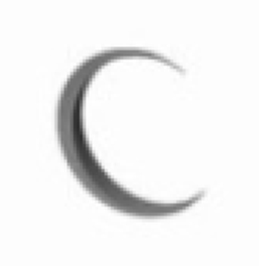EUIPO examiner overturned in Novartis GC logo appeal
As many of our regular readers will know once an examiner at the European Union Intellectual Property Office (EUIPO) has raised an objection it is rare for them to either change their mind or have their decision overturned.
A judgment issued in December 2016 by the General Court of the European Union has been welcomed by applicants and practitioners alike for the pragmatic approach taken to analysing the facts. This contrasts with the often highly academic analysis adopted by some examiners with little, if any, commercial consideration when assessing the registrability of new applications.
A pill of rights?
The case involved Novartis who filed an application for the logo only mark shown here in shades of light and dark green filed in respect of pharmaceutical preparations:

The following day Novartis filed a separate application for the same mark but in greyscale:

In each case the examiner took objection to the applications alleging that they were reminiscent of the shape of the goods covered and also because the signs were too simple to be distinctive.
Novartis appealed to the Board of Appeal who upheld the examiner's decision rejecting the applications. In their opinion the marks applied for were perceived as representing the stylised outline of an oval-shaped pharmaceutical lozenge or pill viewed from above and from an angular perspective, even though they were not faithful reproductions thereof. At this point the Board of Appeal departed from the examiner's assertion that the marks applied for were too simple to be distinctive but held instead that they consisted of a series of components which did not allow the consumer to differentiate the pharmaceutical preparations bearing the signs from those offered by third parties. The Board of Appeal also contended that the marks did not depart significantly from the norm or customs of the sector.
Novartis, still unhappy with the line of reasoning, appealed the cases to the General Court.
The main thrust of their appeal was this: far from resembling pills the marks would be seen as abstract and ambiguous. They picked up on the fact that the Board of Appeal had conceded the marks could be interpreted in many ways and argued that they have a unique character.
The applicant submitted that the marks would be seen as a crescent with different shades to create an abstract image of an ellipse or a representation of the letter 'C' or simply an elegant and unusual design.
Novartis argued that as the marks do not call to mind any one clear image, they leave considerable room for interpretation and encourage the relevant public to play with their various possible implied meanings.
The General Court distilled the issues down to the following two questions.
- Are the marks representations of the goods themselves?
- Are the marks too simple to be regarded as distinctive?
C'ing the light
In relation to the first question the General Court quite rightly (and three cheers for their common sense approach) held that the depictions would not be seen as the goods "viewed from an angular perspective". The court went on to assert that it is very unlikely the relevant public will see the mark as the shape of a pill. Perhaps getting a little carried away, the court went on to state that this was the case "because there is a slight twist in the signs and a play of light and shadow which steered them [the consumer] even further away from the representation of a pill".
The court concluded that as the marks would not be perceived as shapes with any link to pharmaceutical products they could not be regarded as devoid of any distinctive character.
Turning to the second question regarding the simplicity of the marks, the applicant drew attention to the differing views expressed by the examiner and the Board of Appeal. The examiner having concluded that the marks lack distinctive character "because of their excessive simplicity" was not reiterated by the Board of Appeal in their reasoning. The Board of Appeal sought to change the ground of objection arguing that the elements would not be perceived by the public as a trade mark.
Once again, the General Court adopted a more 'real world' approach and concluded that the simplicity of the signs is not such as to deprive them of the necessary minimum distinctive character.
Because the marks could be seen as both the letter 'C' and a crescent moon the court concluded that the marks are endowed with the minimum distinctive character necessary for registration.
The court commented on the ambiguity of the objections raised by the Board of Appeal. Many years ago, in a UK case, a judge held that if an examiner is having difficulty in articulating the grounds for an objection, then perhaps there isn't the basis for a valid objection after all.
It will be interesting to see whether the EUIPO seeks to appeal the decisions up to the highest court in the European Union, the Court of Justice. In our view, however, the General Court has correctly overturned the decisions of the EUIPO and Board of Appeal and that its well reasoned judgment is likely to stand.
In short
Objections based on marks being 'too simple' may well be open to challenge.
Marks (and not necessarily just logos) that can potentially be interpreted in a number of different ways can be regarded as distinctive.
Applicants should carefully consider the language used for any objections raised to see if it is consistent with the law and is applicable for the mark in question.
Case details at a glance
Jurisdiction: European Union
Decision level: General Court
Parties: Novartis AG v EUIPO
Citation: Joined cases T-678/15 & T-679/15
Date: 15 December 2016
Full decision: http://dycip.com/gcnovartis